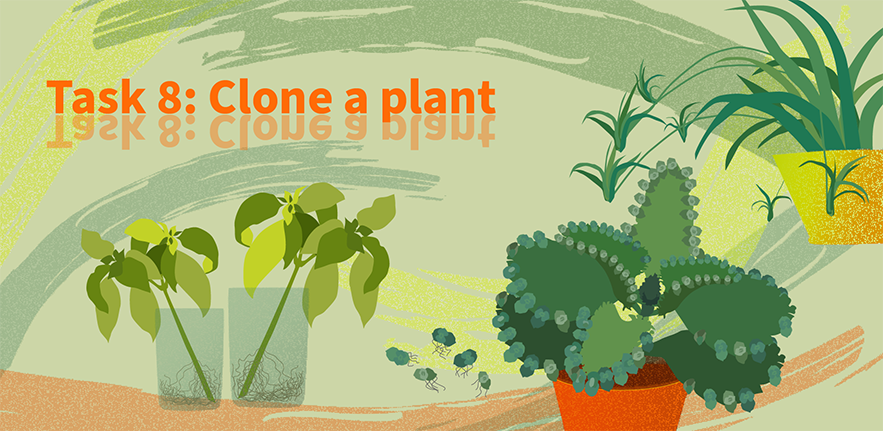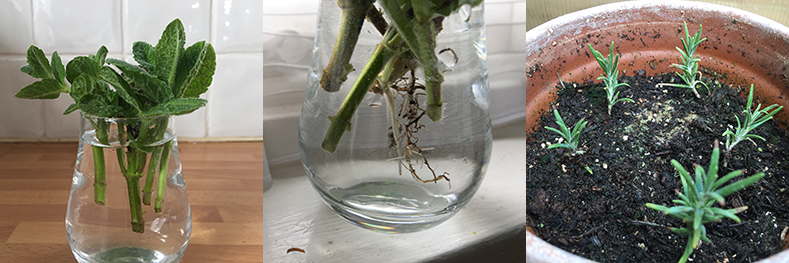
Task 8: Clone a plant
Monday 20 July - September 2020
Background
Can you clone yourself easily? Or grow back a missing limb? Amazingly, many plants can accomplish what is a difficult or impossible task for most animals; they can easily recreate missing body parts, or even a complete body, from just a few cells. For example, by taking a cutting of a leaf or stem and creating the right conditions, you can create an entirely new plant genetically identical to a ‘parent’ plant.
This fascinating ability to regenerate means that we understood the role of stem cells in plants before we did in animals. But how does a plant regenerate from just a piece of a parent plant? Do some body parts work better than others for cloning? Why are some plants are easier to propagate than others? Do the cloned plants look exactly like their parent? Join us in this task to think about these exciting questions together.
Task
Let’s clone a plant right in your kitchen – no need for a lab or a greenhouse! You could choose to clone a houseplant (emerald plant, snake plant, African violet, aloe, kalanchoe …), a plant from your backyard (rosemary, rose …) or pick up some plants from a grocery store (basil, mint, potato, sweet potato, onion bulb …).
Below are some ideas to get you started:
1) Cutting: houseplants are often quite easy to propagate; basil or mint could be good options as well. Look for a healthy stem without flower buds. Cuttings should include the tip of the stem, and at least two or three sets of leaves attached. Using a sharp knife make a clean cut at a 45° angle to maximize the rooting area. Then place the cutting into a small glass with water so that the cut side of the stem is inside the water. Keep your new plants warm and in bright light, but out of direct sunlight. Once the cuttings have developed roots, plant them in a pot with soil.
2) Collect some plant babies that were formed on the leaves of your home kalanchoe/spider plant - ‘mother plant’ - and transfer them into another pot with wet soil. How long do they need to form roots? Do all of baby plants survive?
3) Potato sprouting: if you have some potatoes that are beginning to sprout (the "eyes" have swollen, whitish shoots beginning to develop), simply plant a piece of the sprouting potato in a roomy pot with soil. How long did it take for green shoots to emerge?
You can even test several plants to check which plant part works better to clone different species. Don’t forget to post some pictures of your cuttings and clones as they grow on Twitter using #PlantTaskmaster and @slcuplants!

